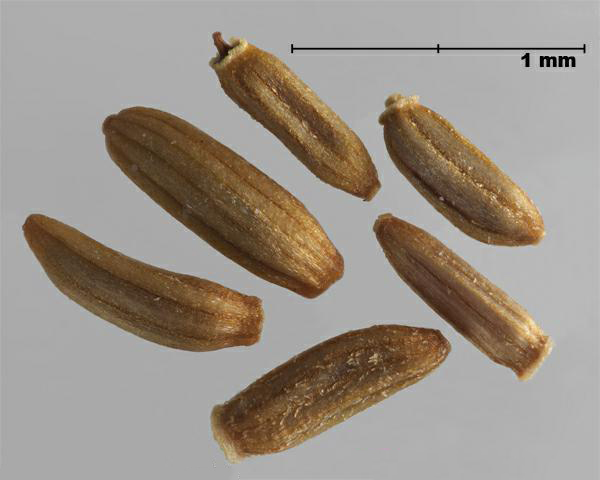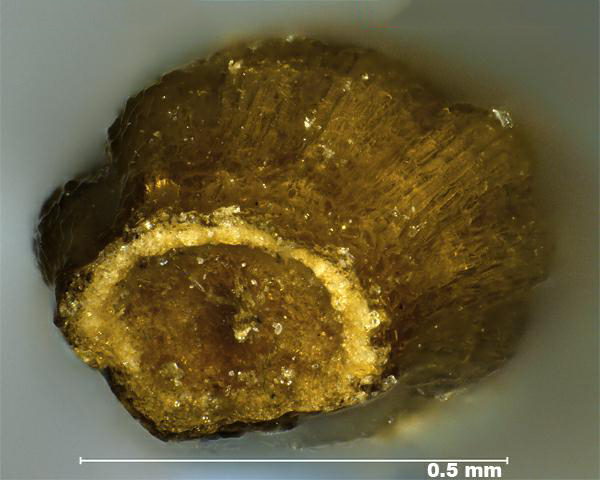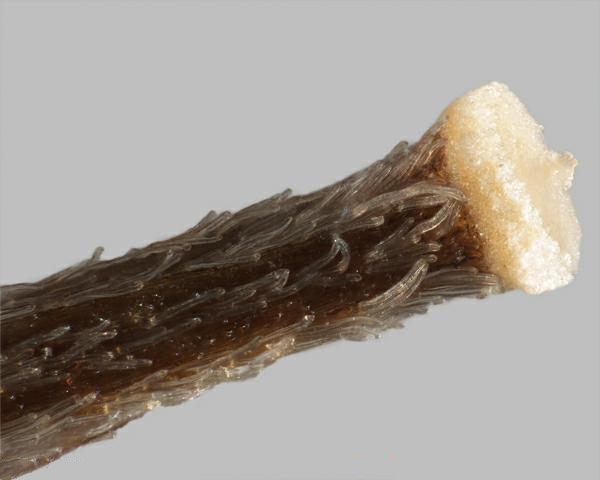Family
Asteraceae
Common Name
Tansy ragwort
Regulation
Primary Noxious, Class 2 in the Canadian Weed Seeds Order, 2016 under the Seeds Act.
Distribution
Canadian: Occurs in BC, MB, NB, NL, NS, ON, PE, QC (Brouillet et al. 2016Footnote 1).
Worldwide: Native to northern Africa, Europe and temperate Asia and introduced in North America, China, Australia, New Zealand, and beyond its native range in Europe (Finland, Norway, Russia) (USDA-ARS 2016Footnote 2). In the United States, it occurs mostly in the west and northeastern regions (Kartesz 2011Footnote 3).
Duration of life cycle
Short-lived perennial
Seed or fruit type
Achene
Identification features
Size
- Achene length: 1.3 - 2.5 mm
- Achene width: 0.4 - 1.0 mm
Shape
- Achene elongate; tapered at base and top is truncate
Surface Texture
- Achene surface has a satin sheen with a roughened surface
- Achene is ribbed, with short hairs in the grooves
Colour
- Achene is light yellow to golden brown with white-haired furrows
Other Features
- A long, white pappus sometimes present on immature achenes
- Achenes are dimorphic; the uncommon outer fruits are hairless
Habitat and Crop Association
Pastures, hay fields, old fields, roadsides, railway lines and disturbed areas (Bain 1991Footnote 4, Darbyshire 2003Footnote 5). Not a known weed of crops, however a problem in pastures due to toxicity (Royer and Dickinson 1999Footnote 6).
General Information
Tansy ragwort is thought to have been introduced into Canada in the 1850s in ships' ballast (Bain 1991Footnote 4). Tansy ragwort contains alkaloids which are toxic to cattle, deer, horses and goats. A single plant can produce as many as 150,000 seeds, which can remain viable for over 20 years (Ministry of Agriculture, Food, and Fisheries 2002Footnote 7).
Similar species
Common groundsel (Senecio vulgaris)
- Common groundsel has a similar size, cylindrical shape, longitudinal ribs and short surface hairs as tansy ragwort.
- Common groundsel (length: 2.8 - 3.0 mm) is generally longer, a darker colour and the surface hairs are more dense than tansy ragwort.
Photos





Similar species


